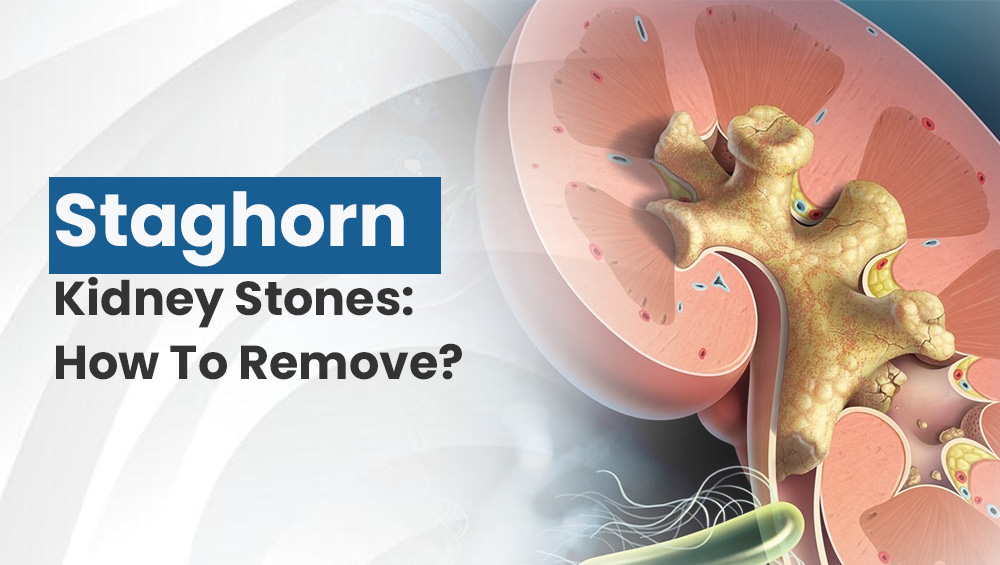Staghorn kidney stones are large, branch-like stones that can occupy a progressive percentage of the affected kidney. It can result in debilitating pain, infection and possible renal damage if untreated. Not only are these stones difficult to catch early on, but they can also be difficult to treat. Also, it will usually require specialized removal techniques that are not covered with traditional kidney stone treatments.
Staghorn stones can often be a source of deep distress in everyday life. And as they get bigger, they make recurrent urinary tract infections, chronic pain, and kidney function problems much more likely. However, some patients defer to the approach, believing that the treatments are terribly invasive or unaware regarding treatment options resulting in a rise in the stone size and problems. The key is finding an effective treatment to regain the ability to be comfortable, prevent infections and maintain kidney function health.
In this blog we will explore the advanced techniques offered for staghorn kidney stone removal, from simple minimally invasive procedures to complex surgeries. When you understand the correct treatment options available to you, including certain procedures like PCNL, ESWL, and RIRS, then that can help empower you to make informed choices with your physician.
How do staghorn kidney stones form?
Staghorn kidney stones form when mineral deposits, primarily calcium and magnesium ammonium phosphate (struvite), accumulate in the kidney over time. Unlike typical kidney stones, staghorn stones are often caused by chronic urinary tract infections (UTIs), particularly those involving bacteria that produce an enzyme called urease.
Here’s how the process works:
- Bacterial Infection: Certain bacteria, like Proteus species, break down urea into ammonia using urease. This increase in ammonia raises the urine’s pH, making it more alkaline.
- Mineral Crystallization: In alkaline urine, magnesium, phosphate, and calcium ions form crystals, which can grow into larger deposits. Over time, these deposits form a staghorn stone, named for its unique shape that resembles antlers branching out.
- Growth and Spread: As the stone grows, it expands into the kidney’s branching system (renal pelvis and calyces), potentially leading to obstruction, recurrent infections, and kidney damage.
The combination of infection and crystallization makes these stones challenging to treat, and they often require targeted approaches for complete removal.
Is removing staghorn kidney stones difficult?
Yes, removing staghorn kidney stones can be challenging due to their size, complexity, and location within the kidney. Here’s why the removal process can be complicated:
- Large Size and Shape: Staghorn stones are typically large and shaped like the kidney’s internal structure, which means they can spread into various parts of the renal pelvis and calyces, fitting into the kidney’s “horn-like” spaces. This branching shape makes complete removal difficult, as it’s often hard to access and clear every piece of the stone.
- Surgical Precision Needed: The removal usually requires advanced surgical techniques. Common procedures include Percutaneous Nephrolithotomy (PCNL) and, sometimes, Retrograde Intrarenal Surgery (RIRS) or open surgery, especially if the stone is complex or located in hard-to-reach areas.
- Risk of Residual Fragments: Even after a successful procedure, small fragments may remain. These residual pieces can act as a base for future stone formation if not entirely cleared, leading to recurrent issues.
- Complications from Infection: Since staghorn stones are often associated with infections, surgery must be carefully managed to prevent any complications, such as sepsis or spreading of infection. Infection control becomes a priority, sometimes requiring antibiotics before and after the procedure.
- Potential Kidney Damage: Large staghorn stones can cause long-term damage to the kidney if left untreated. For some patients, surgeons need to balance removing the stone with preserving as much kidney function as possible.
Given these complexities, removing staghorn kidney stones requires careful planning, experienced surgical teams, and a multi-step approach to ensure that as much of the stone as possible is removed to prevent recurrence and further kidney complications.
what is the best treatment for removing staghorn kidney stones?
The best treatment for removing staghorn kidney stones is often Percutaneous Nephrolithotomy (PCNL), which is a minimally invasive surgical procedure specifically designed to remove large or complex kidney stones like staghorn stones. Here’s a breakdown of why PCNL is generally preferred and other options that may be considered:
1. Percutaneous Nephrolithotomy (PCNL)
- Procedure: PCNL is the most commonly recommended surgery for large and complex stones like staghorn stones. The surgeon makes a small incision in the back, creating a direct pathway to the kidney. A tube, or “nephroscope,” is inserted into the kidney to locate the stone. Using ultrasonic or laser tools, the stone is broken into smaller pieces that can then be extracted through the tube.
- Benefits:
- Highly effective in clearing large stones, with over 90% success in a single session.
- Minimally invasive compared to traditional open surgery, leading to less tissue damage and quicker recovery.
- It is particularly effective for stones that are large or complicated in shape, such as staghorn stones.
- Limitations:
- Requires anesthesia and typically a short hospital stay (1-2 days).
- There may be post-operative discomfort, risk of infection, or bleeding.
- In complex cases, multiple sessions may be necessary to clear all stone fragments.
2. Shock Wave Lithotripsy (SWL)
- Procedure: Shock Wave Lithotripsy is a non-invasive treatment where sound waves (shock waves) are directed externally toward the kidney stone. These waves pass through the body and break the stone into small fragments, which are then passed out naturally through urine.
- Benefits:
- Non-invasive, requiring no incisions or surgery.
- Usually performed as an outpatient procedure, so the patient can return home the same day.
- Recovery is quick, with minimal downtime.
- Limitations:
- Effectiveness decreases with larger or harder stones, making it less suitable for staghorn stones.
- Often requires multiple sessions, as one session may not be enough to break down a large stone completely.
- Not suitable for all stone compositions or very large stones, as fragments may remain, potentially leading to recurrence.
3. Retrograde Intrarenal Surgery (RIRS)
- Procedure: RIRS is a minimally invasive procedure that uses a thin, flexible ureteroscope to reach the kidney via the urinary tract. Once the stone is located, a laser is used to break it into smaller pieces, which can be removed or allowed to pass through the urinary system.
- Benefits:
- No incisions are required, as the scope is inserted through the natural urinary tract.
- Recovery time is short, and patients can usually go home the same day or the next.
- Useful for smaller stones located in difficult-to-reach areas of the kidney.
- Limitations:
- Less effective for large or complex stones, such as staghorn stones, due to limited access and the procedure’s approach.
- May require multiple procedures for complete removal.
- The smaller stone fragments left behind could result in future stone formation.
For most cases, PCNL remains the gold standard for staghorn kidney stones due to its high success rate in clearing large stones with minimal invasiveness.
Dealing with kidney complications may seem difficult, but herea t CureStone, we are dedicated to providing you relief as well as a sustainable solution. With extensive experience, we specialize in providing care tailored to your needs so you can get the treatment and support that works for you.
We do more than just treat your existing kidney stones — we work to prevent them from coming back. Our specialists will guide you each and every step of the way – from your initial consultation to your recovery, providing thorough care that minimizes discomfort and keeps you free of stones.
We employ best practices and preventive approaches in order to decrease the chances of recurrent kidney stones. We offer comprehensive assessments, individualized treatment plans, and continuing support to help resolve the root causes of these stones.
Contact us today for expert care and guidance!!

